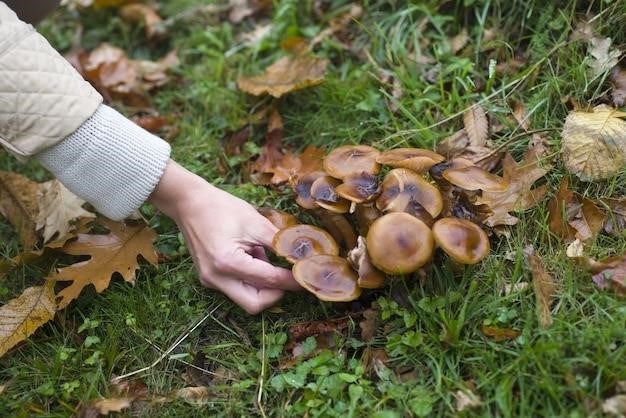audubon field guide mushrooms
National Audubon Society Field Guide to North American Mushrooms⁚ A Comprehensive Guide for Mushroom Enthusiasts
The National Audubon Society Field Guide to North American Mushrooms is a comprehensive and authoritative guide to the mushrooms of North America. This field guide is a must-have for any mushroom enthusiast, whether you are a seasoned expert or just starting out.
Introduction
The world of mushrooms, with its diverse shapes, colors, and textures, holds a captivating allure for nature enthusiasts. From the delicate and ephemeral to the robust and long-lasting, mushrooms play a vital role in the intricate web of life, acting as decomposers and forming symbiotic relationships with plants. For those seeking to unravel the mysteries of these fascinating fungi, the National Audubon Society Field Guide to North American Mushrooms stands as an invaluable resource.
This comprehensive guide, a testament to the National Audubon Society’s long-standing commitment to fostering a deeper appreciation for the natural world, offers a detailed exploration of the diverse mushroom species found across North America. With its visually rich format and meticulously crafted descriptions, it empowers both novice and experienced mycologists to embark on a journey of discovery, identifying and understanding the fascinating world of mushrooms that surrounds them.
Whether you are an avid forager seeking edible treasures or a curious observer eager to unravel the secrets of the forest floor, this field guide provides the tools and knowledge necessary to navigate the intricate world of mushrooms with confidence and excitement.
Overview of the Field Guide
The National Audubon Society Field Guide to North American Mushrooms is a comprehensive and visually stunning guide to the diverse world of mushrooms found across North America. It features over 700 full-color photographs, meticulously organized by color and shape, making identification simple and accurate even for novice mushroom enthusiasts. This user-friendly approach allows for quick and efficient identification in the field, ensuring a rewarding experience for all levels of mycologists.
Beyond its visual appeal, the guide provides detailed descriptions of each species, encompassing key physical characteristics, edibility information, seasonal patterns, preferred habitats, geographical range, potential look-alikes, and alternative names. This wealth of information equips readers with a thorough understanding of the mushroom’s identity and its place within the broader ecological landscape. Furthermore, the guide delves into the fascinating world of mushroom conservation, highlighting the impact of climate change on these vital organisms and emphasizing the importance of sustainable practices in mushroom harvesting.
The National Audubon Society Field Guide to North American Mushrooms is a must-have for any nature enthusiast seeking to deepen their understanding and appreciation of the captivating world of mushrooms;
History of the National Audubon Society Field Guides
The National Audubon Society, a renowned conservation organization, has a long and distinguished history of publishing field guides that have become indispensable tools for nature enthusiasts. For over four decades, the Society has been dedicated to educating and inspiring people about the natural world, releasing comprehensive guides covering a wide range of topics, from birds to wildflowers. Their commitment to scientific accuracy and user-friendly design has solidified their reputation as a trusted source for nature information. The Audubon Society’s field guides have played a pivotal role in fostering a deeper understanding and appreciation of the natural world, inspiring countless individuals to become passionate advocates for conservation.
The Society’s latest additions to their iconic guide series, including the “Wildflowers” and “Mushrooms” guides, reflect their commitment to updating their resources to reflect the latest scientific discoveries and address the pressing environmental challenges of our time. These updated guides are a testament to the National Audubon Society’s dedication to providing accurate and relevant information to help people connect with and protect the natural world.
Key Features of the Audubon Mushroom Field Guide
The Audubon Mushroom Field Guide is renowned for its comprehensive coverage of North American mushrooms, offering an unparalleled resource for both beginners and experienced mycologists. It stands out with its distinctive visual organization, employing a color-and-shape-based system that simplifies identification in the field. This approach allows users to quickly locate similar-looking mushrooms, making the process of identification more efficient and accurate. The guide features over 700 full-color identification photographs that showcase mushrooms in their natural habitats, providing a realistic representation of their appearance. These photographs, combined with detailed descriptions, make it easier to distinguish between species and understand their key characteristics.
The Audubon Mushroom Field Guide goes beyond mere identification, providing valuable information on edibility, seasonality, habitat, range, and look-alikes for each species. This comprehensive approach helps users not only identify mushrooms but also understand their ecological roles and potential risks associated with consumption. The guide also incorporates insights into the impact of climate change on mushroom populations, highlighting the importance of conservation efforts in preserving these fascinating organisms.
Comprehensive Coverage
The Audubon Mushroom Field Guide stands out for its extensive coverage of North American mushrooms, encompassing a vast array of species. It features detailed descriptions and high-quality photographs of over 700 different mushrooms, making it one of the most comprehensive photographic field guides available. This thoroughness ensures that users can identify a wide range of mushrooms encountered in the wild, from common varieties to rarer species. The guide’s comprehensiveness is further enhanced by its inclusion of information on hundreds of additional mushroom species, providing a broader overview of the fungal diversity found across North America. This detailed coverage caters to both casual mushroom enthusiasts and seasoned mycologists, offering a valuable resource for exploring the fascinating world of fungi.
The guide’s commitment to comprehensiveness extends beyond species descriptions. It also includes information on edibility, seasonality, habitat, range, and look-alikes for each species, providing a well-rounded understanding of each mushroom’s characteristics and potential risks. This approach helps users make informed decisions about the mushrooms they encounter, ensuring safety and responsible interactions with the natural world.
Visual Organization
The Audubon Mushroom Field Guide takes a unique and user-friendly approach to visual organization, prioritizing ease of identification in the field. Instead of strictly adhering to family groupings, the guide organizes mushrooms by color and shape, mirroring how they are often encountered in nature. This intuitive system allows users to quickly narrow down potential identifications based on easily observable characteristics. The visual organization is further enhanced by the inclusion of 762 full-color identification photographs, showcasing mushrooms in their natural habitats, providing a realistic and accurate representation of their appearance. This visual emphasis complements the detailed text descriptions, creating a comprehensive and accessible approach to mushroom identification.
The guide’s visual organization is particularly valuable for beginners and those seeking quick identification in the field, where time is often limited. By grouping similar-looking mushrooms together, regardless of their taxonomic relationships, the guide simplifies the identification process, making it more efficient and user-friendly. This approach reduces the need to navigate complex taxonomic classifications, allowing users to focus on the visual cues that matter most in the field.
Detailed Species Descriptions
Beyond its visual organization, the Audubon Mushroom Field Guide excels in its detailed species descriptions. Each mushroom entry provides a wealth of information, meticulously crafted to assist in accurate identification and understanding. The descriptions delve into the mushroom’s physical characteristics, encompassing its cap shape, size, and texture; the arrangement and color of its gills or pores; and the appearance of its stem, including its length, thickness, and surface features. This detailed attention to physical attributes empowers users to distinguish between similar-looking species, ensuring a precise identification.
The guide’s descriptions extend beyond morphology, incorporating information on the mushroom’s edibility, seasonality, preferred habitat, and geographic range. This comprehensive approach allows users to assess the safety of a particular mushroom for consumption, determine the optimal time and location for finding it, and understand its ecological role within its environment. The descriptions also include notes on potential look-alikes, highlighting similar species that might be mistaken for the one being identified. This crucial information helps to prevent accidental consumption of poisonous mushrooms, emphasizing the importance of accurate identification.

Information on Edibility
A key aspect of the Audubon Mushroom Field Guide is its comprehensive coverage of edibility, addressing a primary concern for mushroom enthusiasts. Each species entry provides a clear and concise assessment of its edibility, categorizing it as edible, poisonous, or inedible. This information is presented in a straightforward manner, avoiding ambiguous or misleading terminology. The guide clearly distinguishes between mushrooms that are safe to eat and those that pose a risk to human health, ensuring users have access to reliable information for making informed decisions.
Furthermore, the guide emphasizes the importance of caution when foraging for mushrooms, acknowledging the potential risks associated with consuming unidentified species. It strongly advises readers to rely on expert identification before consuming any wild mushroom, highlighting the serious consequences that can arise from misidentification; This emphasis on responsible mushroom foraging promotes safety and underscores the importance of accurate knowledge for enjoying the culinary delights of the fungal world.
Season, Habitat, and Range
The Audubon Mushroom Field Guide goes beyond mere identification, providing valuable insights into the ecological context of each mushroom species. For every entry, detailed information on the mushroom’s seasonality, preferred habitat, and geographic range is presented. This information is crucial for understanding the conditions under which a particular mushroom thrives and for locating it in the wild.
The guide details the specific months or seasons when each mushroom is most likely to be found, allowing users to plan their foraging expeditions strategically. It also describes the type of habitat that each species favors, whether it’s deciduous or coniferous forests, meadows, or even disturbed areas. The guide further provides information on the geographical distribution of each mushroom, outlining the regions where it can be encountered across North America.
This comprehensive approach to season, habitat, and range empowers users to confidently predict the likelihood of encountering specific mushrooms in particular locations and during specific times of the year, enhancing the overall foraging experience.
Look-Alikes and Alternative Names
The Audubon Mushroom Field Guide goes beyond simply describing a mushroom’s appearance. It recognizes the importance of accurate identification, especially when dealing with potentially poisonous species; Therefore, each entry includes a section dedicated to look-alikes, highlighting mushrooms that might be mistaken for the one in question. This section provides detailed descriptions of these similar-looking species, emphasizing the key features that distinguish them from the target mushroom.
Furthermore, the guide acknowledges the diversity of common names used for mushrooms. Recognizing that different regions or communities may refer to the same mushroom by different names, the guide provides a list of alternative names associated with each species. This comprehensive approach helps users navigate the sometimes confusing world of vernacular names and ensures accurate identification regardless of the terminology used.
By including information on look-alikes and alternative names, the Audubon Mushroom Field Guide equips users with the necessary knowledge to confidently distinguish between similar species and avoid potential misidentification, particularly when foraging for edible mushrooms. This focus on safety and accuracy further enhances the guide’s value for both beginners and seasoned mycologists.
Using the Field Guide for Mushroom Identification
The Audubon Mushroom Field Guide is designed to be user-friendly, making mushroom identification accessible to all levels of experience. The guide’s visual organization allows users to quickly narrow down their search by color and shape, making it easy to find the corresponding section for the mushroom they’re examining. Once a potential match is found, the detailed descriptions and high-quality photographs provide a comprehensive overview of the species, including its physical characteristics, habitat, and seasonality.
The guide also includes helpful tips on how to approach mushroom identification in the field. It emphasizes the importance of examining multiple characteristics, such as the mushroom’s cap, gills, stem, and spores, to make a confident identification. It also encourages users to take detailed notes and collect specimens for further study, if possible. By following these guidelines, users can maximize the accuracy of their identification and ensure a safe and enjoyable experience when exploring the world of fungi.
The Audubon Mushroom Field Guide also encourages users to consider the context of their find. Understanding the surrounding habitat, including the type of trees or plants nearby, can provide valuable clues for identification. Additionally, the guide advises users to consult with experienced mycologists or join local mushroom clubs to further refine their knowledge and enhance their mushroom identification skills.
Conservation and Climate Change Impacts on Mushrooms
The Audubon Mushroom Field Guide acknowledges the vital role mushrooms play in maintaining healthy ecosystems and highlights the challenges they face from climate change and habitat loss. The guide emphasizes the interconnectedness of fungi with their surrounding environment, explaining how their presence supports biodiversity and contributes to the decomposition of organic matter, nutrient cycling, and soil health. It also addresses the threats posed by deforestation, urbanization, and agricultural practices, which disrupt fungal habitats and reduce their populations.
Climate change presents a particular challenge to mushroom populations. The guide discusses how rising temperatures, altered precipitation patterns, and extreme weather events can disrupt fungal growth cycles, leading to changes in fruiting seasons, species distributions, and overall abundance. It highlights the importance of understanding these impacts to develop effective conservation strategies, such as protecting critical habitats, promoting sustainable land management practices, and engaging in research to monitor and adapt to the changing environment.
The guide encourages readers to engage in responsible mushroom foraging practices, ensuring that they harvest sustainably and minimize disturbances to fungal populations. It also advocates for citizen science initiatives and community involvement in mushroom conservation efforts, recognizing that collective action is essential to safeguard these vital organisms for future generations.
Comparison with Other Mushroom Field Guides

The Audubon Mushroom Field Guide distinguishes itself from other guides by its comprehensive coverage, visual organization, and detailed species descriptions. While other guides may focus on specific regions or types of mushrooms, the Audubon guide provides a broad overview of North American species, making it a valuable resource for both beginners and seasoned mycologists. Its visual organization, grouping mushrooms by color and shape, facilitates identification in the field, making it a practical tool for mushroom hunters.
The guide also stands out for its detailed species descriptions, which include information on edibility, season, habitat, range, look-alikes, and alternative names. This comprehensive approach ensures that users have access to essential information for safe and accurate identification. While other guides may provide similar information, the Audubon guide excels in its thoroughness and accessibility, making it a user-friendly resource for all levels of experience.
While some reviewers suggest that the Audubon guide’s visual organization is not as comprehensive as other guides, such as the Peterson Field Guide to Mushrooms, its focus on full-color photographs and detailed descriptions makes it a valuable addition to any mushroom enthusiast’s library. The Audubon guide’s dedication to conservation and climate change impacts also sets it apart, making it a relevant and timely resource for understanding the challenges facing fungal populations.
Reviews and Recommendations
The National Audubon Society Field Guide to North American Mushrooms has garnered generally positive reviews from both experienced mycologists and enthusiastic beginners. Reviewers praise its comprehensive coverage, including detailed species descriptions, information on edibility, and insights into mushroom conservation and climate change impacts. The guide’s visual organization, grouping mushrooms by color and shape, is also highly regarded for its practicality in field identification.
Some reviewers, however, point out that the guide’s visual organization may not be as comprehensive as other field guides, such as the Peterson Field Guide to Mushrooms. Despite this criticism, the Audubon guide’s focus on full-color photographs and detailed descriptions makes it a valuable resource for anyone interested in identifying North American mushrooms. Overall, the Audubon guide is widely recommended for its comprehensiveness, accessibility, and valuable insights into the world of fungi.
While some reviewers suggest that the Peterson Field Guide to Mushrooms might be a more suitable option for those seeking a pocket-sized and comprehensive guide, the Audubon guide’s focus on conservation and climate change impacts sets it apart as a relevant and timely resource for understanding the challenges facing fungal populations. It is a testament to the guide’s value that it continues to be a go-to reference for both seasoned mycologists and enthusiastic beginners.


